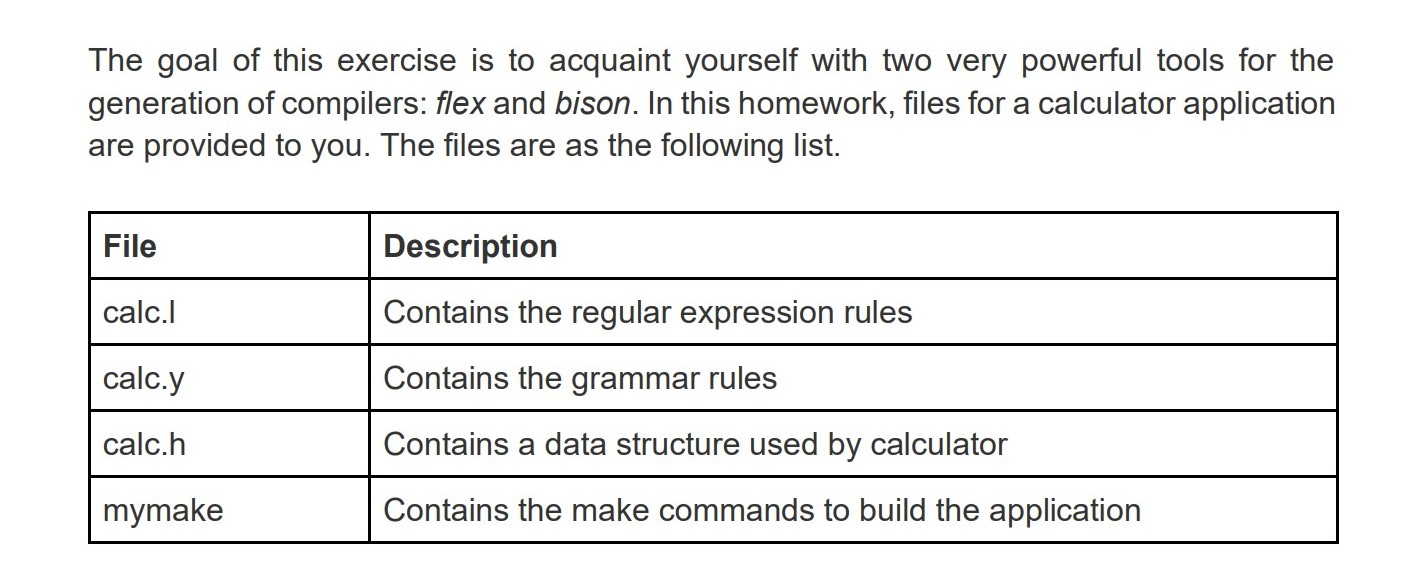
Process - it goes straight into the generated file Put the following into a specification file called calc.y
#LEX YACC BISON CODE#
Similar code to that shown here is on many web pages. Integers, or reals, and "scientific notation" can be used. The aim of this example is to write a calculator that willĪnd give them the correct precedence, understanding brackets. This matches one or digits followed (optionally, hence theįinal ?) by a ".


The input is read from Left to right - i.e, from the start of theįile (or line) to the end. Know about the technical details, but a little of the vocabulary is useful Parsers sometimes have an edge over auto-generated ones. To produce error reports that are useful to humans, which is where hand-crafted Yacc ("yet another compiler-compiler")Īnd bison (so named because it isn't a Yak) produce code for aįunction called yyparse() that does this.īoth phases need to detect errors. The second phase builds these elements (often known as lexemes) into expressions or phrases and Or flex produce code for a function that does this, called yylex(). Is usually deal with (as are comments), and keywords are replaced by symbols. "scanning") - reading in a string of charactersĪnd outputing a stream of strings and tokens. In general the first stage in parsing is "lexical analysis" (or If you've ever written a program that reads text lines that are in particular formats, The minimum of details will beĮxplained here - with luck you should be able to adapt the programs in smallīefore introducing the example, I'll briefly deal with parsing in general, and with

They're not trivial to use, but they're lessĮrror-prone than hand-crafted alternatives. Structured (a computer program, for example, or a configuration file, or a maths expression). These programs generate source code to parse text that's This document illustrates how it can be done in about 50 lines of code using flex and bison. There's isn't such a function, but writing one is possible. People sometimes ask if there's a C++ library function that given a string like " 2+(3*4)" will return its value as a number.

Parsing arithmetic expressions - Bison and Flex


 0 kommentar(er)
0 kommentar(er)
